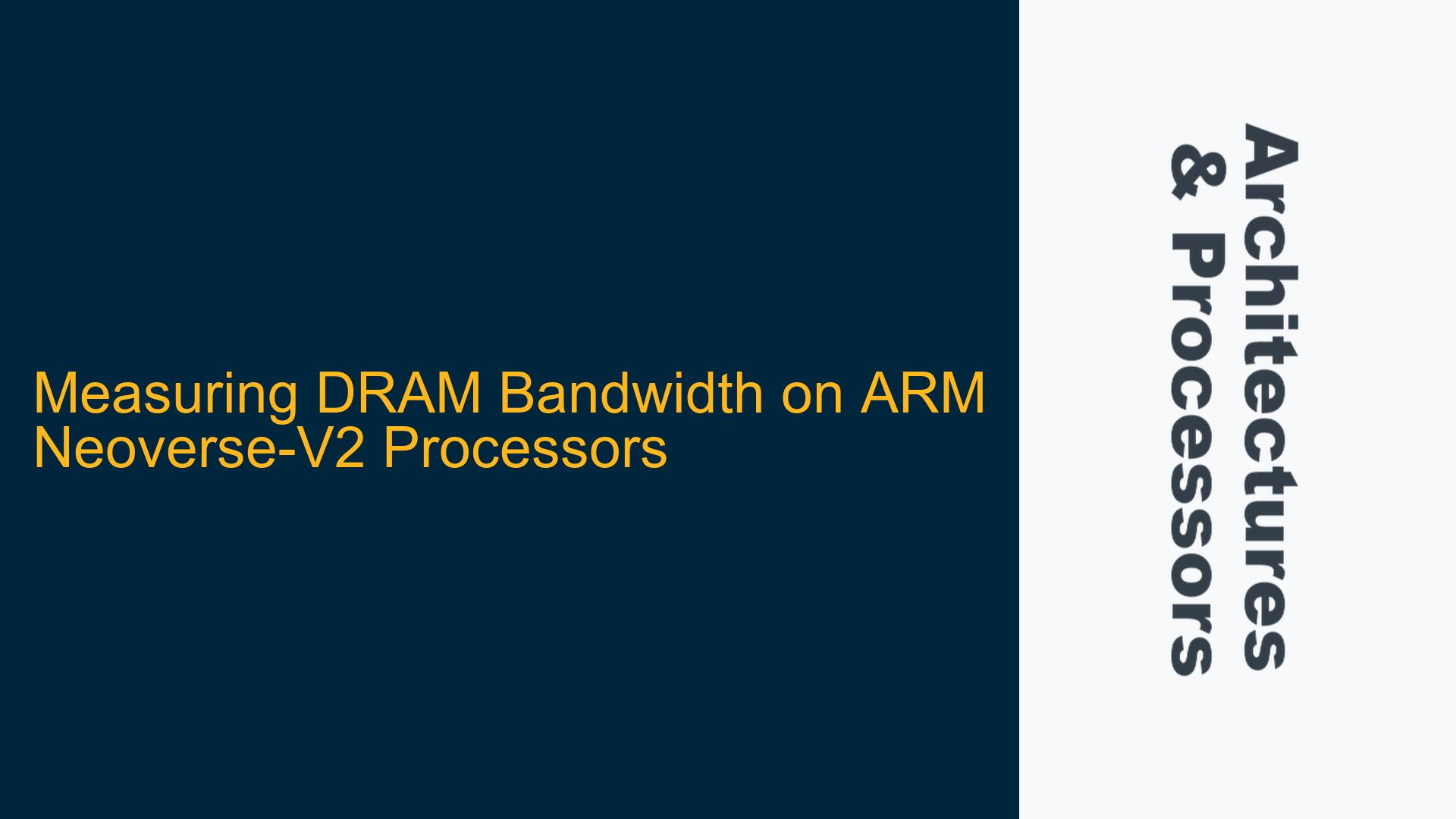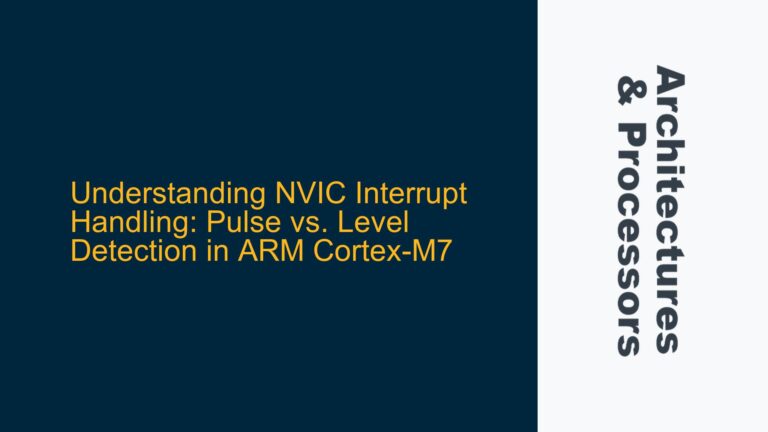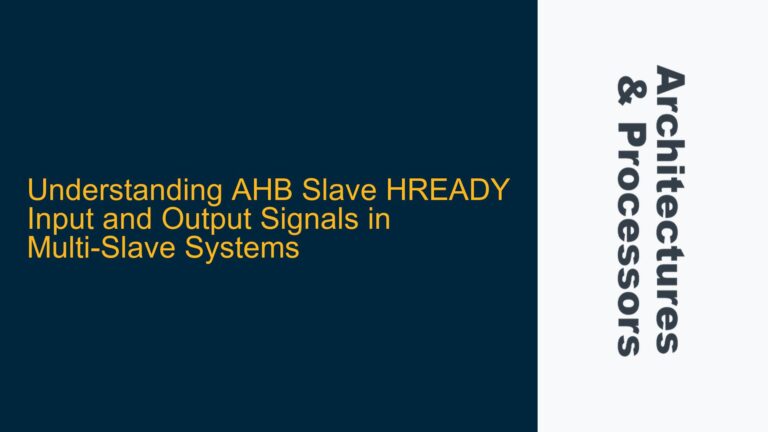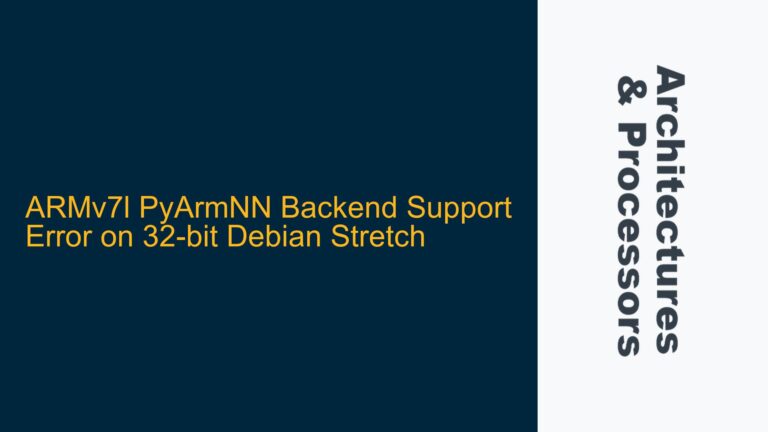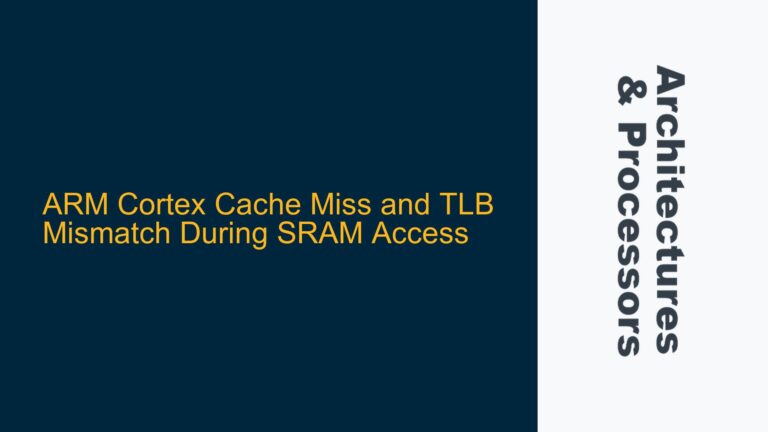Understanding DRAM Bandwidth Measurement on ARM Neoverse-V2
Measuring DRAM bandwidth on ARM-based systems, particularly on high-performance processors like the ARM Neoverse-V2, is a critical task for optimizing workload performance. Unlike Intel processors, where tools like PCM-Memory provide straightforward memory bandwidth measurements, ARM architectures require a more nuanced approach due to differences in hardware performance counters, memory controller architectures, and software tooling. The ARM Neoverse-V2, being a server-class processor, is designed for high-throughput workloads, making accurate bandwidth measurement essential for performance tuning and capacity planning.
The ARM Neoverse-V2 processor integrates advanced memory subsystems, including multiple DRAM channels, prefetching mechanisms, and cache hierarchies, which complicate bandwidth measurement. The memory controller on Neoverse-V2 is optimized for low latency and high bandwidth, but these optimizations can obscure direct measurements if not accounted for properly. Additionally, the Linux kernel and user-space tools must be configured to access the relevant performance monitoring units (PMUs) and memory controller registers to gather accurate data.
To measure DRAM bandwidth effectively, one must understand the interplay between the processor’s memory controller, the DRAM channels, and the workload’s access patterns. Bandwidth is influenced by factors such as read/write ratios, cache hit rates, and memory access locality. On ARM Neoverse-V2, the memory controller exposes performance counters that can be used to track the number of read and write transactions, the amount of data transferred, and the utilization of each DRAM channel. However, accessing these counters requires specialized tools and a deep understanding of the processor’s architecture.
Challenges in Accessing ARM Neoverse-V2 Performance Counters
The primary challenge in measuring DRAM bandwidth on ARM Neoverse-V2 lies in accessing and interpreting the performance counters exposed by the memory controller and the processor’s PMUs. Unlike Intel’s PCM-Memory tool, which provides a high-level abstraction for memory bandwidth measurement, ARM systems often require manual configuration of performance monitoring registers and the use of low-level profiling tools.
ARM Neoverse-V2 processors include a set of PMUs that can be programmed to count specific events, such as DRAM read/write transactions, cache misses, and memory controller activity. However, these PMUs are not always exposed to user-space applications by default. The Linux kernel must be configured to enable access to these counters, and the appropriate drivers must be loaded. Additionally, the ARM Architecture Reference Manual (ARM ARM) provides detailed documentation on the PMU events, but interpreting these events requires a thorough understanding of the processor’s microarchitecture.
Another challenge is the lack of standardized tools for ARM-based systems. While Intel provides a suite of performance monitoring tools, ARM ecosystems often rely on open-source tools or vendor-specific utilities. For example, the perf tool in Linux can be used to access PMU events, but it requires manual configuration and scripting to extract meaningful bandwidth measurements. Furthermore, the ARM Neoverse-V2’s memory controller may implement proprietary features that are not fully documented, making it difficult to correlate PMU events with actual DRAM bandwidth.
The complexity of the ARM Neoverse-V2’s memory subsystem also poses challenges. The processor supports multiple DRAM channels, each with its own performance characteristics. Measuring aggregate bandwidth requires aggregating data from all channels, which can be error-prone if not done carefully. Additionally, the memory controller may implement optimizations such as write coalescing and read prefetching, which can distort bandwidth measurements if not accounted for.
Leveraging Linux Perf and Custom Scripts for Bandwidth Measurement
To measure DRAM bandwidth on ARM Neoverse-V2 processors, the most effective approach is to leverage the Linux perf tool in combination with custom scripts to aggregate and interpret performance counter data. The perf tool provides a flexible interface for accessing PMU events, but it requires careful configuration to measure memory-related metrics accurately.
The first step is to identify the relevant PMU events for DRAM bandwidth measurement. On ARM Neoverse-V2, these events typically include L3D_CACHE_RD, L3D_CACHE_WR, and BUS_ACCESS. These events track the number of read and write transactions to the L3 cache and the memory bus, respectively. By correlating these events with the size of each transaction, it is possible to estimate the total DRAM bandwidth.
To configure perf for bandwidth measurement, the following command can be used:
perf stat -e L3D_CACHE_RD,L3D_CACHE_WR,BUS_ACCESS ./workload
This command runs the specified workload and collects data on the selected PMU events. However, this approach only provides aggregate counts and does not directly report bandwidth. To convert these counts into bandwidth measurements, additional processing is required.
A custom script can be used to parse the output of perf and calculate bandwidth. The script must account for the size of each transaction and the duration of the measurement period. For example, if the L3D_CACHE_RD event counts the number of 64-byte cache line reads, the total read bandwidth can be calculated as:
total_read_bytes = L3D_CACHE_RD_count * 64
read_bandwidth = total_read_bytes / measurement_duration
Similarly, write bandwidth can be calculated using the L3D_CACHE_WR event. The BUS_ACCESS event can be used to validate the measurements by ensuring that the total bus traffic matches the sum of read and write transactions.
For more granular measurements, perf can be configured to sample PMU events at regular intervals. This allows for the creation of a time-series plot of DRAM bandwidth, which can be useful for identifying performance bottlenecks. The following command enables sampling:
perf record -e L3D_CACHE_RD,L3D_CACHE_WR,BUS_ACCESS -F 1000 ./workload
This command samples the selected events at 1 kHz and stores the data in a file for later analysis. The perf script command can then be used to extract the sampled data, which can be processed using a custom script to generate a bandwidth plot.
In addition to perf, other tools such as likwid and ARM Streamline can be used for bandwidth measurement. likwid provides a higher-level interface for performance monitoring and includes predefined metrics for memory bandwidth. However, it may require customization to support ARM Neoverse-V2-specific events. ARM Streamline is a graphical profiling tool that can visualize bandwidth and other performance metrics, but it requires a compatible hardware setup and may not be suitable for all use cases.
Finally, it is important to validate the bandwidth measurements by cross-referencing them with other metrics, such as CPU utilization and cache hit rates. Discrepancies between these metrics may indicate issues with the measurement methodology or the presence of uncounted memory traffic. By combining perf with custom scripts and validation techniques, it is possible to achieve accurate and reliable DRAM bandwidth measurements on ARM Neoverse-V2 processors.
